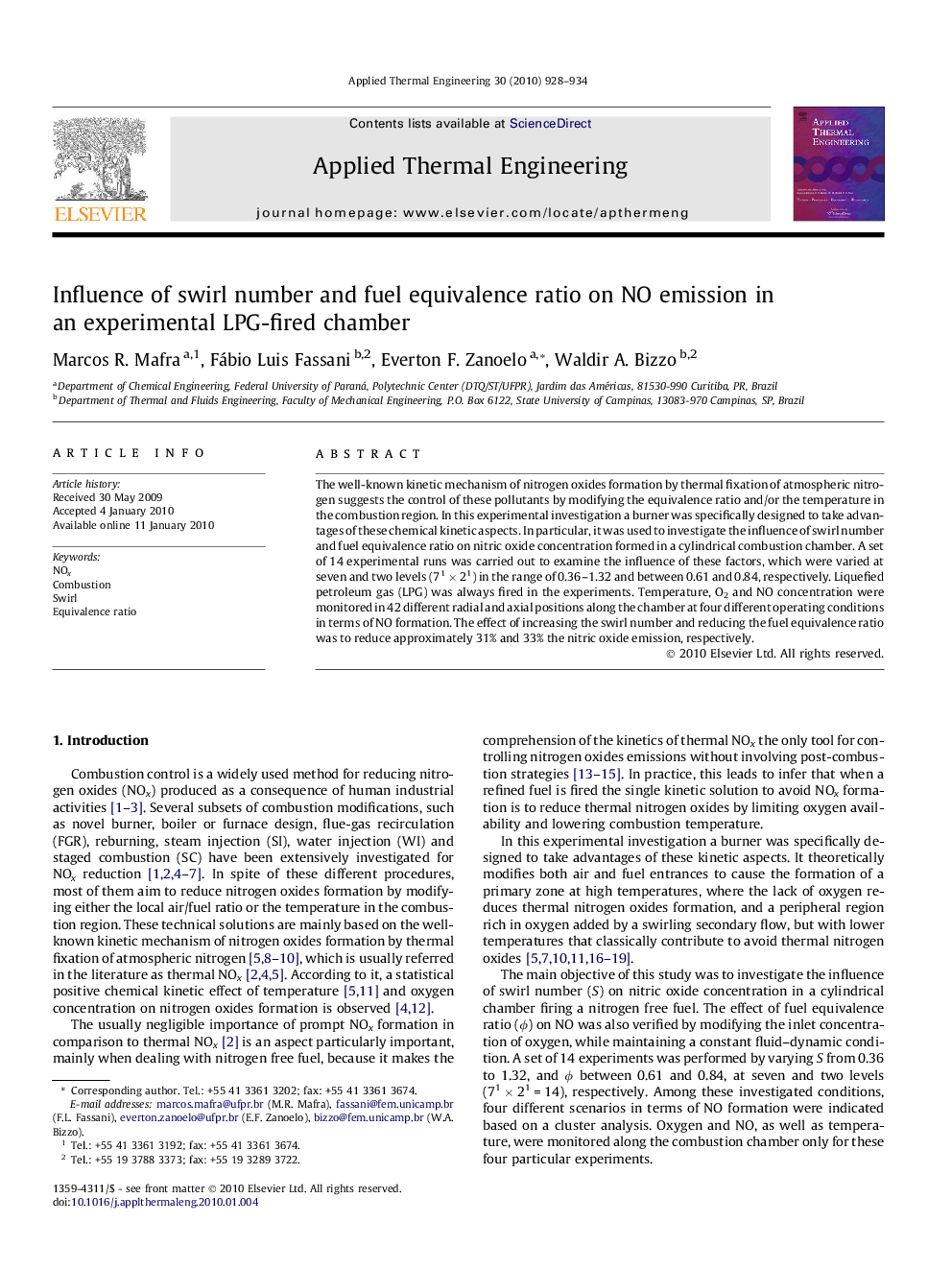| Article ID | Journal | Published Year | Pages | File Type |
|---|---|---|---|---|
| 648451 | Applied Thermal Engineering | 2010 | 7 Pages |
The well-known kinetic mechanism of nitrogen oxides formation by thermal fixation of atmospheric nitrogen suggests the control of these pollutants by modifying the equivalence ratio and/or the temperature in the combustion region. In this experimental investigation a burner was specifically designed to take advantages of these chemical kinetic aspects. In particular, it was used to investigate the influence of swirl number and fuel equivalence ratio on nitric oxide concentration formed in a cylindrical combustion chamber. A set of 14 experimental runs was carried out to examine the influence of these factors, which were varied at seven and two levels (71 × 21) in the range of 0.36–1.32 and between 0.61 and 0.84, respectively. Liquefied petroleum gas (LPG) was always fired in the experiments. Temperature, O2 and NO concentration were monitored in 42 different radial and axial positions along the chamber at four different operating conditions in terms of NO formation. The effect of increasing the swirl number and reducing the fuel equivalence ratio was to reduce approximately 31% and 33% the nitric oxide emission, respectively.
